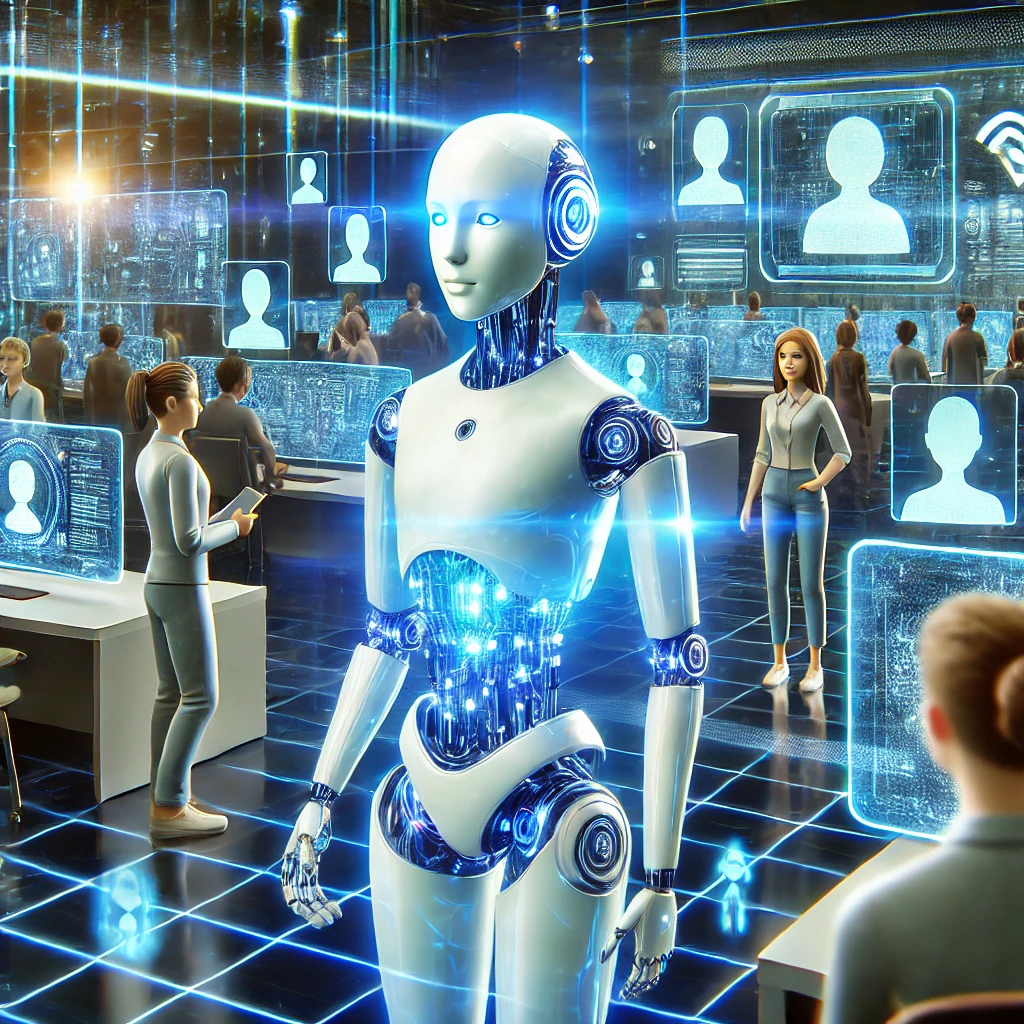- Introduction to AI Chatbots
Artificial Intelligence (AI) chatbots have become an essential tool in today’s fast-paced world of technology. From automating customer support to improving user experience, AI chatbots are changing how businesses interact with individuals.
But what exactly is an AI chatbot? At its core, an AI chatbot is a software application powered by artificial intelligence and natural language processing (NLP) that can mimic human-like conversations Whether to answer common questions, with suggestions that target you about providing or help with behavior, AI chatbots are becoming more and more important.
- History and development of chatbots
The development of chatbots began in the middle of the 20th century. Let’s examine their progress:
1966: Eliza
Created by Joseph Weizenbaum, Eliza was one of the first chatbots, simulating a psychiatrist’s conversation. His abilities were limited to recognizing keywords when he was breaking ground.
The 1990s: ALICE and the First Innovations
Pattern-matching algorithms were introduced by the Artificial Linguistic Internet Computer Entity (ALICE). Although it lacked contextual understanding, it paved the way for modern chatbots.
2010s: Siri, Alexa, and modern AI assistants
The introduction of voice assistants has revolutionized conversational AI. Siri, Alexa, and Google Assistant combine machine learning with NLP for intelligent, contextual interaction.
today
Advanced AI chatbots use deep learning, sentiment analysis, and predictive analytics, enabling them to understand emotions and deliver proactive solutions.s
- How AI Chatbots Work
AI chatbots use natural language processing (NLP)and, machine learning, and frequently interface with external databases or APIs. This is an explanation of how they operate.
Input Definitions:
Users enter text or voice commands, which the chatbot processes using NLP to understand mood and context.
Data Processing:
The chatbot takes information from its own knowledge or external sources to generate answers.
Response generation:
The chatbot uses preset rules or reproduction models, producing human-like responses.
Continuing Education:
Chatbots utilize machine learning to examine user interactions and gradually improve their replies.
- Benefits of using AI Chatbots
AI chatbots offer many benefits, e.g.
24/7 Availability:
Unlike human representatives, chatbots are always available, providing round-the-clock support.
Cost efficiency:
Automation significantly reduces operating costs.
Enhanced User Experience:
Personalized feedback and instant solutions improve customer satisfaction.
How to change:
Chatbots are capable of managing hundreds of simultaneous chats without sacrificing quality.
Data collection and analysis:
Through conversational analytics, companies can gain valuable insights into customer preferences.
- AI chatbots in various industries
AI chatbots are making waves in multiple industries:
E-Commerce: Assist customers with product recommendations and purchasing questions.
Health care: Provide symptom assessment, appointment scheduling, and patient follow-up.
Education: To enhance learning through personalized instruction and immediate question resolution.
Finance: Assistance with accounting inquiries, fraud detection, and financial planning.
Travel and hospitality: To facilitate travel bookings and answer travelers’ questions.
- Key Features of Modern AI Chatbots
Multichannel support:
Easily integrate with websites, apps, and messaging systems like WhatsApp and Facebook Messenger.
Personal characters:
Modify contacts based on user history and preferences.
Voice and Text Support:
Communicate with text or voice, depending on the user’s preference.
Combinations work:
For more efficient company procedures, integrate with CRM, ERP, and other business tools.
Emotional Analysis:
Measure user sentiment to optimize responses and improve engagement.
The story continues
These sections include expanding further into each topic, providing real-world examples, and adding actionable advice for businesses looking to implement AI chatbots Other sections will touch on generative AI and a discussion of other emerging technologies and ethical considerations.
Would you like me to flesh out specific parts of this article, add other parts, or refine the content?
